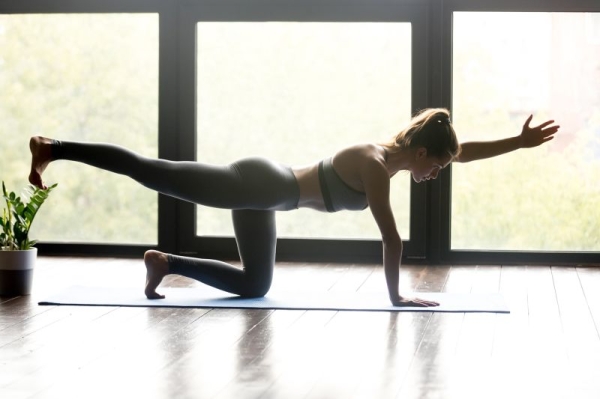
Editor’s note: Before beginning any new exercise program, consult your doctor. Stop immediately if you experience pain.
Planks are one of the most effective exercises for strengthening your midsection, as they target all of your major core muscles: the transverse abdominis, rectus abdominis, external obliques and internal obliques. Yet despite the popularity of various 10-minute plank challenges, planking is actually one of the most dreaded core exercises, according to many fitness experts.
If you fall into this category, don’t worry. There are several other body-weight exercises that are also great at strengthening your middle, which is something almost everyone can benefit from. But it’s not because a strong core equates to a sexy six-pack — a strong core is central to your overall health.
Your core muscles control the movement in your spine, pelvis and rib cage. A strong core improves your balance and stability, makes it easier to do many daily activities, such as tying your shoes and carrying groceries, and helps prevent injury.
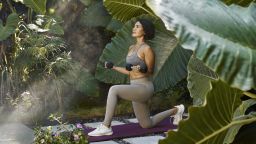
Asia, Indonesia, Bali, Fit Asian woman using dumbbells during home workout, in garden surrounded by tropical plants with sun rays and early morning mist Martin Puddy/Digital Vision/Getty Images
“Everything we do is related to the core,” said Samira Shuruk, a Pilates instructor at the Yoga Center of Columbia in Maryland. “When you sneeze, cough, belly laugh, have an orgasm — it’s all related to the core. Also, as time goes on, a strong core helps with hernia prevention and incontinence issues.”
A strong core is also an important means of combating back pain, especially in the lumbar region. Nearly 40% of adults in the US reported suffering from back pain in 2019, according to the US Centers for Disease Control and Prevention. You’re more likely to have back pain if you are overweight, don’t exercise regularly, have congenital spinal issues, or have a job requiring heavy lifting, pushing or pulling, according to a 2020 report by the National Institutes of Health.
The breath is the key to success
Before performing any core exercise, you first need to think about your breathing. In addition to the abdominal and oblique muscles, your core also includes the diaphragm, pelvic floor and multifidus muscle, also known as your deep core. To activate the deep core during your workout, you need to breathe from your diaphragm.
“Make sure you’re not holding your breath, which increases the intra-abdominal pressure,” said Dr. Jessica Chellsen, a physical therapist and certified strength and conditioning specialist at Vibrant Coast Physical Therapy & Wellness in San Luis Obispo, California. “And exhale through pursed lips during the hard part of each exercise, which will help you recruit your core muscles.”
You can practice diaphragmatic breathing by lying on your back with your legs bent and your feet on the floor. Place your hands on your rib cage beneath your chest and slowly breathe in through your nose. Feel your ribs expand under your hands. Then exhale audibly through your mouth, like you’re blowing up a balloon.
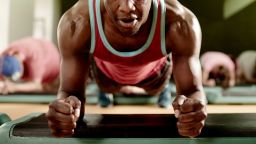
Shot of a man doing a plank exercise at the gymhttp://195.154.178.81/DATA/i_collage/pu/shoots/805401.jpg Mikolette/E+/Getty Images
Core exercises that don’t require planking
Ready to strengthen your core without planking? Then try the bicycle crunch, bird dog and dead bug. People new to working their core muscles should perform these exercises three times a week, doing two sets of 12 repetitions, Chellsen said.
Bicycle crunch
Like the plank, the bicycle crunch works all of your major core muscles. To do this exercise, lie on your back with your feet on the floor and your hands behind your head. Contract your core muscles, then raise your knees to a 90-degree angle. Slowly go through a bicycle pedaling motion, bringing one knee toward the opposite elbow by rotating your torso, then repeating on the other side.
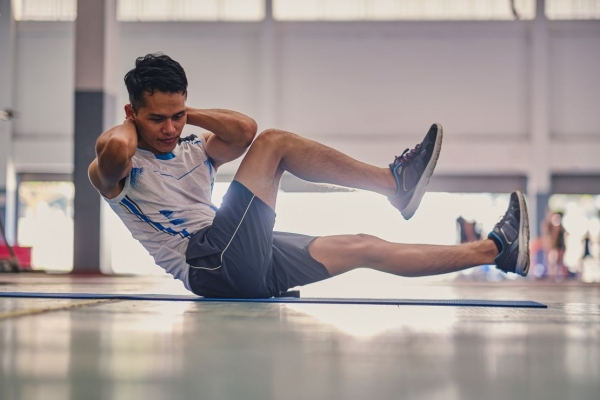
Bicycle crunches require more leg movement than a typical crunch. They’re great for improving core strength, stability, flexibility and coordination. Prasert Prapanoppasin/Moment RF/Getty Images
“I really like this exercise because it’s rotational,” Chellsen said. “It works your obliques, which will help you if you play sports, like golf, but also when you’re cooking in the kitchen and rotating around.”
To make the bicycle crunch easier, tap your feet on the ground after every twist. To make it more difficult, keep your feet in the air.
Bird dog
The bird dog (thought to be named after the pointing position of hunting dogs) works your posterior kinetic chain muscles: the erector spinae, rectus abdominis, transverse abdominis, upper back and shoulders, hamstrings, calves and glutes. These muscles are important for stabilizing the pelvis and low back when performing movements such as running, getting up off the floor and picking up heavy items. Essentially, they stop us from falling forward and down.
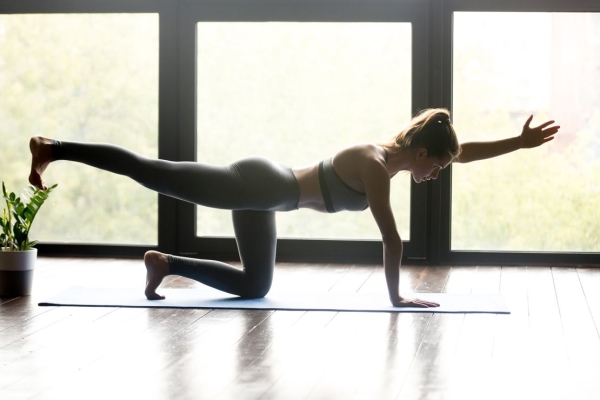
Along with strengthening the core, hips and back muscles, the bird dog pose can help alleviate low back pain and promote good posture. fizkes/iStockphoto/Getty Images
To execute the bird dog, place your hands and knees on the floor hip-width apart. Slowly extend your opposite arm and leg until they’re parallel to the floor. Lower, then repeat with the opposite limbs.
“This is an amazing exercise I do in every single Pilates class,” Shuruk said. “Make sure your wrists are beneath your shoulders and your knees are beneath your hips. I also emphasize trying to make a long, straight line from your fingers to your toes.”
To make the exercise more challenging, hold a light dumbbell in your extended hand. To make it easier, start by extending one leg, but not the opposite arm.
Dead bug
The dead bug works every muscle in your core. First, lie on your back with your arms raised and pointing to the ceiling and your legs in the air at a 90-degree angle. Lower the opposite arm and leg until they are just above the floor, then return to the starting position and repeat on the other side.
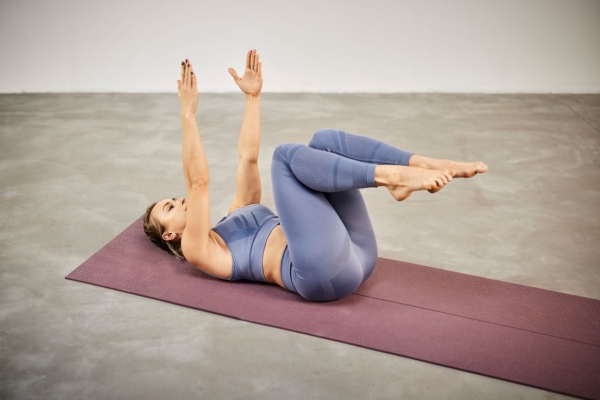
The dead bug exercise strengthens and stabilizes your core, and improves balance, posture and coordination. Morsa Images/E+/Getty Images
“I give almost all of my clients some version of the dead bug because it’s straightforward, which allows you to focus on proper core engagement,” Chellsen said. “A lot of people try core exercises that are too difficult for them, and then they compensate in some way and don’t properly activate the core.”
To increase the difficulty of this exercise, perform it while holding light weights. To make it easier, limit how far you lower your arm and leg.

Ashley Mateo/CNN Underscored
Throughout all of your core exercises, you should always move mindfully and with control, Shuruk said.
“If you’re moving fast, you’re doing calisthenics,” she said. “You’re using more momentum and probably losing out on the stability factor, which is what makes these exercises so great for the deep core.”
Melanie Radzicki McManus is a freelance writer who specializes in hiking, travel and fitness.
Sign up for CNN’s Fitness, But Better newsletter series. Our seven-part guide will help you ease into a healthy routine, backed by experts.

